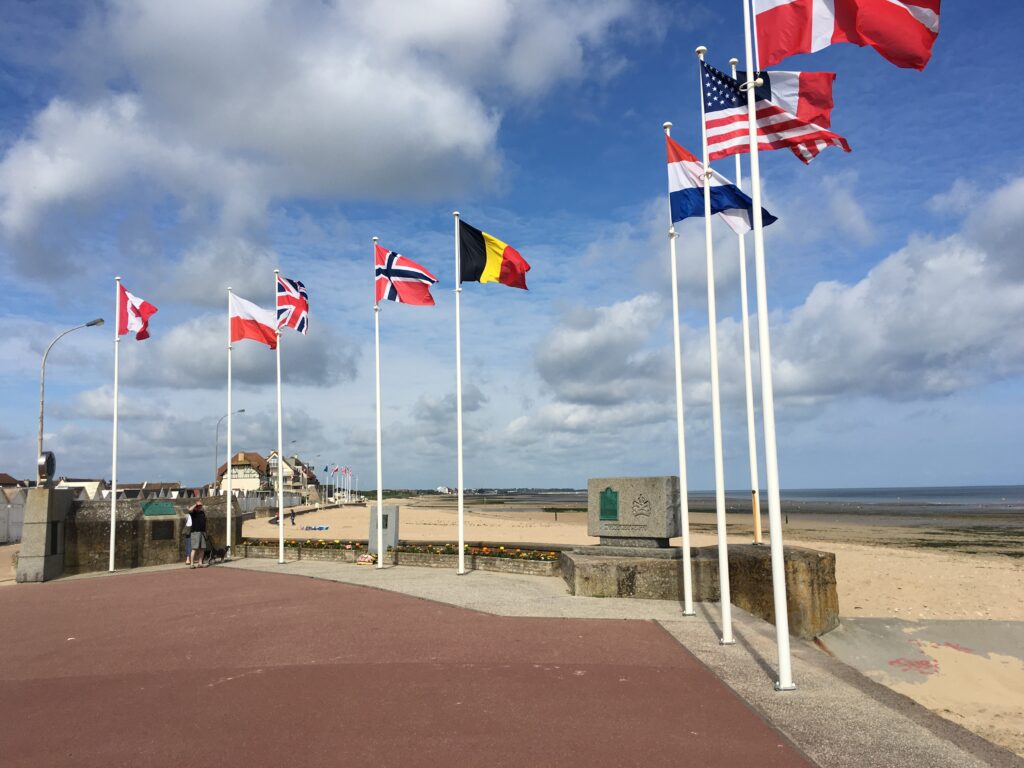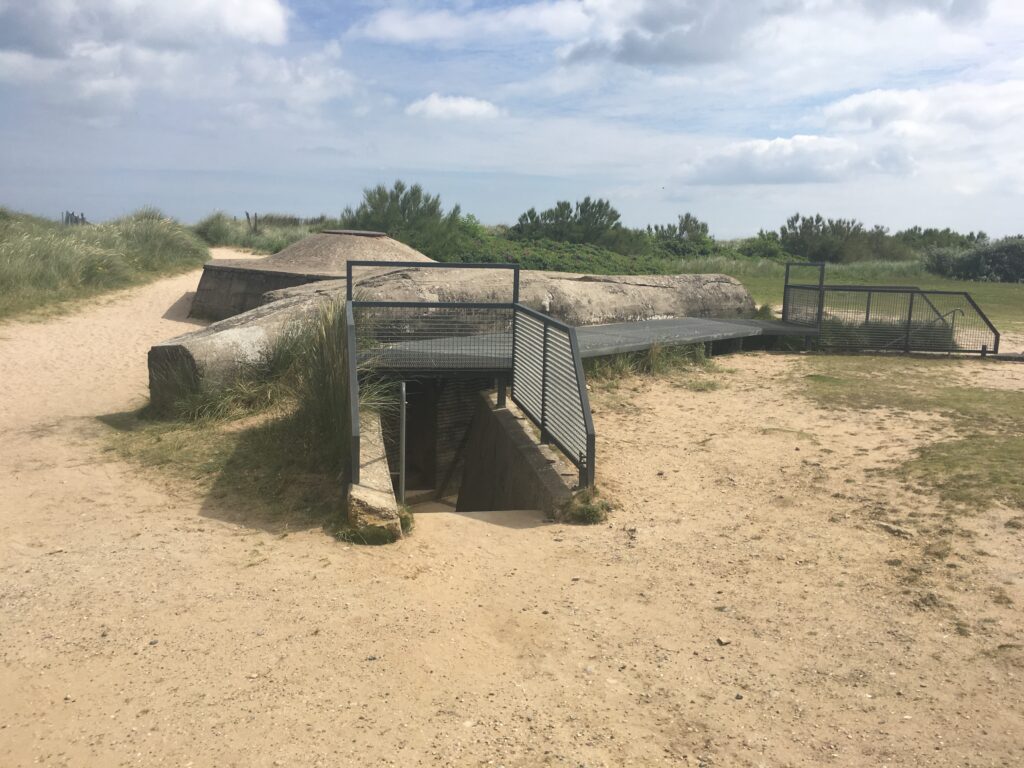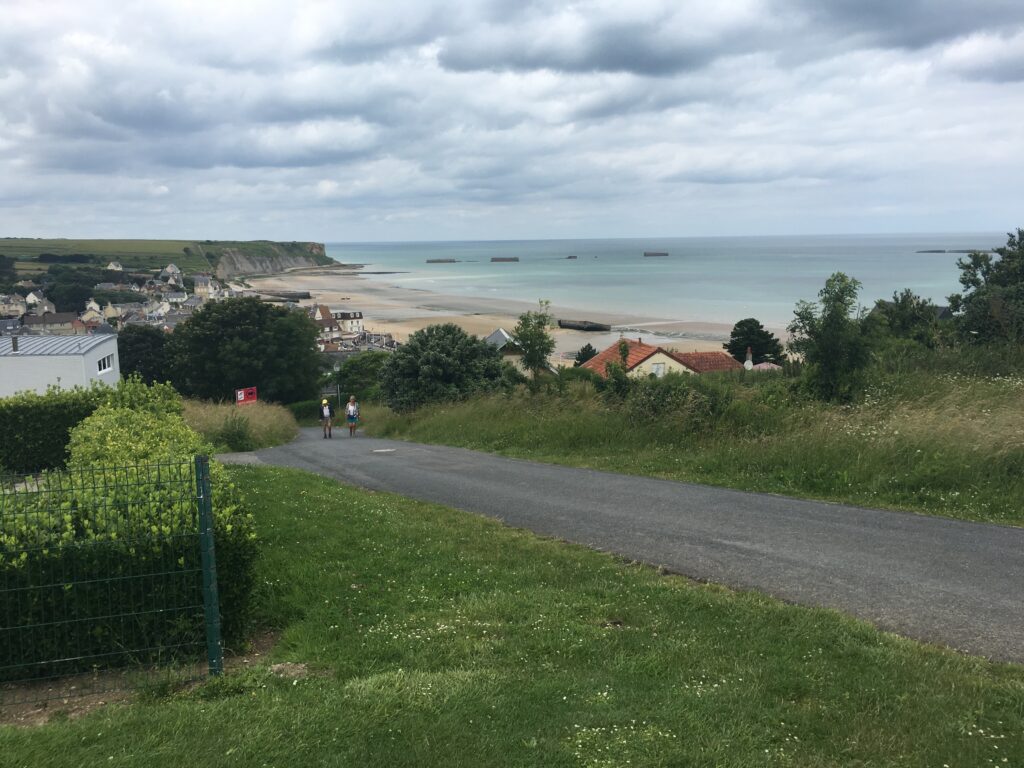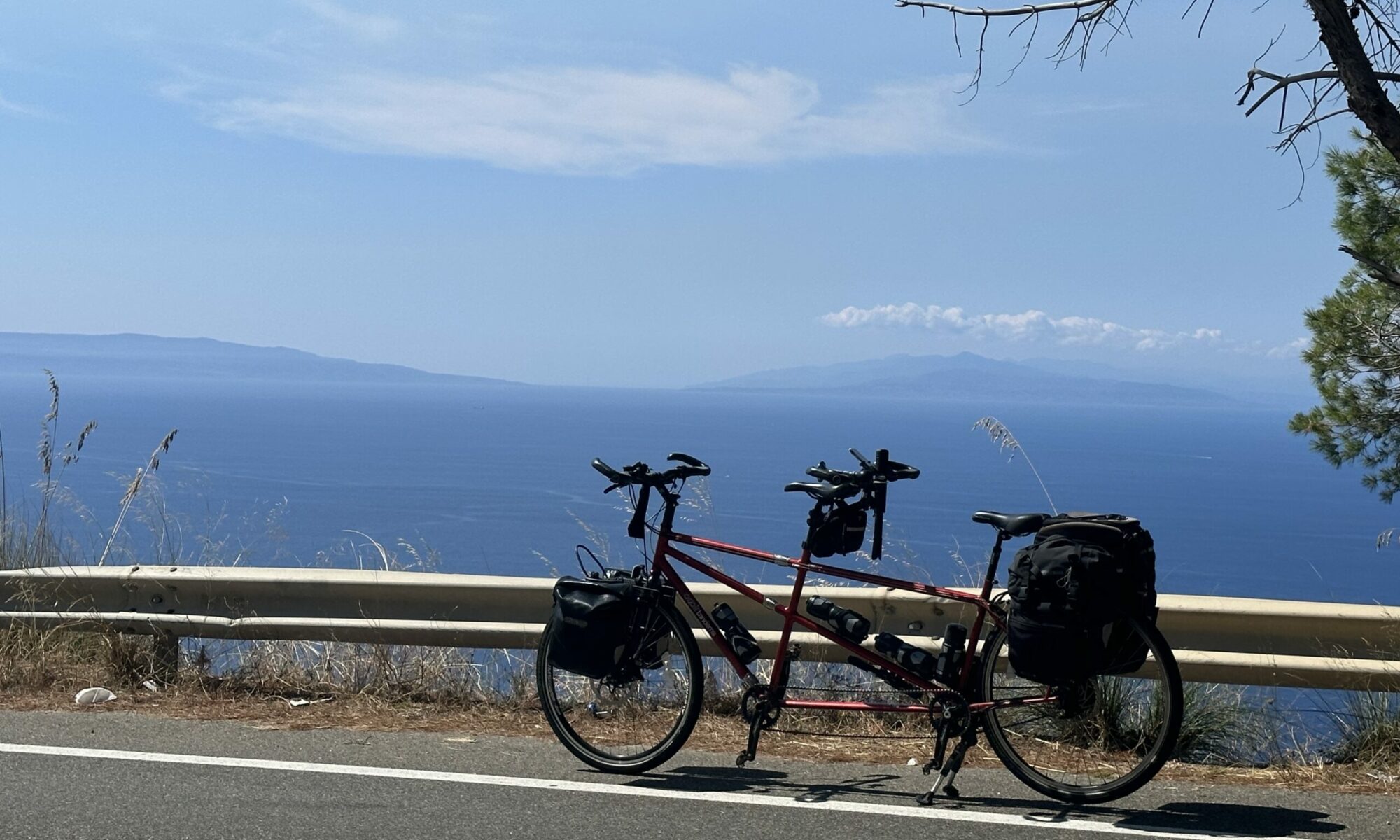A short day, allowing time to explore the Sword, Juno and Gold landing beaches.
Lion-sur-Mer is a small town, barely larger than a village, but boasts several restaurants. It being a Monday, however, we knew from previous experience that most of them would be closed, and so it turned out. Only one remained open. Helpfully, as we discovered from TripAdvisor, it was only 48 metres from our hotel. It turned out to be a pizzeria, a very friendly one with excellent pizzas. For the first time in our journey we sampled Normandy cider – a pichet of Brut cider, shared between the two of us. It was deliciously dry and refreshing. We enjoyed our meal very much, and escaped just before the England v Iceland match was shown on their TV.
As so often on this trip we were woken by the church bells at around eight in the morning. After a simple continental breakfast (of the “no plates supplied, just use your napkin” variety peculiar to France) we rescued the tandem from a corridor in the hotel and set off. Today was always planned to be a short day, as we knew we were travelling along key parts of the landing beaches, and suspected that we would stop frequently to investigate.

The weather was more helpful today. There was no rain, the sun emerged intermittently and we didn’t seem to have much of a headwind. Our route alternated between the main coastal road and some very pleasant dedicated cycle paths next to the sandy beaches.
Our first objective, soon reached, was the Juno beach memorial and museum at Courseulles-sur-Mer. This area of the landing was achieved by Canadian soldiers, and there were many Canadian nationals at the museum. It was well-designed, with two short films topping and tailing the visit, the second of which showed the landings in harrowing detail. Outside, behind the dunes, were German gun emplacements and observation posts, which looked horribly claustrophobic and rather sinister.

We set off again in the late morning along the main road, with only eight kilometres remaining. Just before Arromanches we tackled our only serious hill of the day – a longish grind up to a viewpoint from which we caught our first site of the remnants of the Mulberry harbour for which Arromanches is famous. At the top of the hill was a viewpoint and small museum. We ate crisps and chocolate bars for lunch (really pushing the boat out on this trip) and gazed out from the viewpoint. To the east we could see the Sword and Juno beaches, and to the west, set in a narrow valley, our destination at Arromanches, an attractive town, bounded at sea by the ruined, ghostly remnants of the once-massive Mulberry harbour.

Nothing left to do, then, but to release the brakes and let the tandem carry us down the hill into the centre of Arromanches and to our lodgings for the night in a very pleasant Chambres d’Hôtes. Changing out of our lycra cycling gear and into shorts and T-Shirts (this always feels strange on a cycling holiday) we strolled into town, partook of beer and wine in the warm sunshine, then headed into the Musée du Débarquement for the afternoon. Our articulate French guide, speaking in English for the benefit of visiting school parties, took us through a series of showcases explaining how the Mulberry harbour was constructed. It was clearly an immense achievement, to the enormous credit of the engineers who worked to satisfy Churchill’s requirements. Again, the museum was extremely well designed, and after our visit we stepped down onto the beach to look at the remains of the harbour, and to stick a token toe in the water as one must do on such journeys.
Tomorrow will be an even shorter day in cycling terms, as we switch our focus to a much earlier conflict and head into Bayeux to see the tapestries.
Click here to see today’s route.
